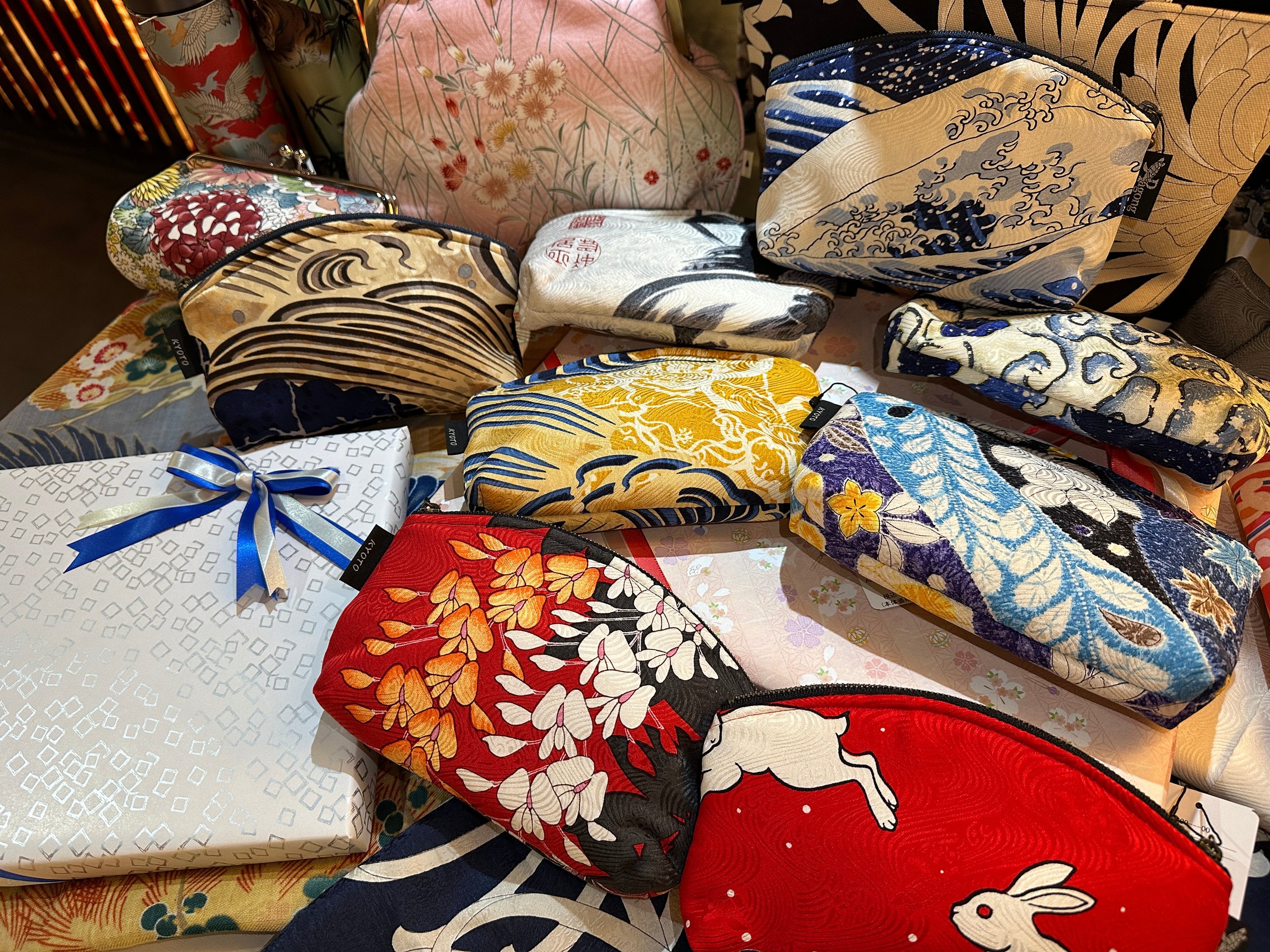 Image 1 of 5
Image 1 of 5

 Image 2 of 5
Image 2 of 5

 Image 3 of 5
Image 3 of 5

 Image 4 of 5
Image 4 of 5

 Image 5 of 5
Image 5 of 5






"Omocha" Gamaguchi Pochette (Small)
Color/ Orange and Multi-color
Japanese name/ おもちゃ (Omocha)
-About-
This is a pattern from the early Showa period. It is a kimono for girls. It features a variety of nostalgic toys.
Taiguruma (fish-snake wheel), Kazaguruma (windmill), Inuguruma (dog-drawn cart), Hina dolls, Den-den taiko drums, Sho flutes, Hagoita (battledore), Koma (top), Buriburi (buri-buri), Hoko (floor), etc. There are many more fun toys. It is a celebratory pattern that prays for the healthy growth of children.
The Kara Uchiwa fan with a chrysanthemum pattern originates from a Chinese story, "Kikujido." It is said that Kikujido lived in a valley deep in the mountains, and lived to be hundreds of years old as a child by drinking the valley water that dripped from the morning dew on the chrysanthemum leaves. It is immortal youth and longevity. The instruments are den-den drums, sho flutes, bells, and buri-buri... musical instruments. The musical instruments are ohayashi, which make sounds to call the gods. Musical instruments are auspicious things that invite the blessings of the gods. The crown with plum blossoms on it means success in life by demonstrating literary talent, according to a Chinese story. The kocho (butterfly) is a costume worn by children in gagaku when they dance at Buddhist events to appease the souls of the dead.
There is also a chapter on the kocho in the Tale of Genji, which depicts the elegant life of the dynasty and derives an image of wealth.
Since it is New Year's Day that people wear formal attire, there are also hagoita and tops, which are New Year's toys. There are also treasures . You can see jewels, gold bags, scrolls, weights, raincoats, rhinoceros horns, cloves, and seven treasures. These patterns are filled with the love of parents who wish for their children to live healthy, wealthy, and spiritually rich lives.
・Size:7.8 x 5 x 0.6 inch
・Belt :47 inch
・Made in Japan
・Currency : US Dollar (USD)
Color/ Orange and Multi-color
Japanese name/ おもちゃ (Omocha)
-About-
This is a pattern from the early Showa period. It is a kimono for girls. It features a variety of nostalgic toys.
Taiguruma (fish-snake wheel), Kazaguruma (windmill), Inuguruma (dog-drawn cart), Hina dolls, Den-den taiko drums, Sho flutes, Hagoita (battledore), Koma (top), Buriburi (buri-buri), Hoko (floor), etc. There are many more fun toys. It is a celebratory pattern that prays for the healthy growth of children.
The Kara Uchiwa fan with a chrysanthemum pattern originates from a Chinese story, "Kikujido." It is said that Kikujido lived in a valley deep in the mountains, and lived to be hundreds of years old as a child by drinking the valley water that dripped from the morning dew on the chrysanthemum leaves. It is immortal youth and longevity. The instruments are den-den drums, sho flutes, bells, and buri-buri... musical instruments. The musical instruments are ohayashi, which make sounds to call the gods. Musical instruments are auspicious things that invite the blessings of the gods. The crown with plum blossoms on it means success in life by demonstrating literary talent, according to a Chinese story. The kocho (butterfly) is a costume worn by children in gagaku when they dance at Buddhist events to appease the souls of the dead.
There is also a chapter on the kocho in the Tale of Genji, which depicts the elegant life of the dynasty and derives an image of wealth.
Since it is New Year's Day that people wear formal attire, there are also hagoita and tops, which are New Year's toys. There are also treasures . You can see jewels, gold bags, scrolls, weights, raincoats, rhinoceros horns, cloves, and seven treasures. These patterns are filled with the love of parents who wish for their children to live healthy, wealthy, and spiritually rich lives.
・Size:7.8 x 5 x 0.6 inch
・Belt :47 inch
・Made in Japan
・Currency : US Dollar (USD)


































